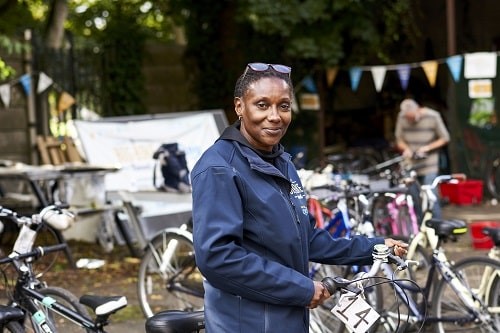With research showing that multi-generational workforces drive productivity and innovation, it’s clearly in employers’ best interests to embrace older workers and take positive steps to hire, retain and support them.
Features
Recruiting, retaining and supporting older workers: tips on getting started
Today’s job market is rapidly evolving, and employers are facing huge challenges including skills and labour shortages. Yet, there is an area of the workforce that is undervalued and underutilised.
One-third of the workforce in England, more than nine million workers, are aged 50 and over. And this population is only predicted to grow as the UK undergoes a massive age shift. There are currently more than 11 million people aged 65 and over. In 10 years’ time, this will have increased to 13 million people – the equivalent of more than one in five (22 per cent) of the population.
Research shows that multi-generational workforces drive productivity and innovation. Despite this, older workers often face prejudice and are overlooked. Employment rates drop after the age of 55, and over half of people have stopped working before the state pension age. This is a terrible waste of experience and knowledge. At a time of skills and labour shortages, older workers are absolutely paramount to filling these labour gaps. It is in employers’ best interests to embrace older workers and their needs to hire and retain these key workers.
 Employment rates drop after the age of 55, and over half of people have stopped working before the state pension age. Photograph: Centre for Ageing Better
Employment rates drop after the age of 55, and over half of people have stopped working before the state pension age. Photograph: Centre for Ageing Better
But how can employers begin to become age-friendly? The Centre for Ageing Better’s Age-friendly Employer Action Framework offers a clear outline to getting started. The framework identifies five key areas where employers can make changes to create multi-generational workforces. These five key areas are:
- Create an age-friendly culture
- Hire age-positively
- Be flexible about flexible working
- Encourage career development at all ages
- Ensure everyone has the health support they need.
Create an age-friendly culture
Employers need to create workplace cultures that are open, inclusive and positive about the benefits of age diversity if they are to reap the benefits of a maturing workforce now and into the future. Employers who work to create an inclusive culture of all ages will benefit from improved staff recruitment and retention as well as increased productivity and overall job satisfaction.
One way to start is to analyse your workforce data by age. Are older applicants less likely to get to interview? Are your staff in their 50s and 60s accessing training and development? How old are your staff on average when they leave your organisation? Employers’ own data will give them a starting point for their journey.
 Tracy Riddell: "Flexible working practices are the single biggest factor that would enable people out of work in their 50s and 60s to return to employment."
Tracy Riddell: "Flexible working practices are the single biggest factor that would enable people out of work in their 50s and 60s to return to employment."
Hire age positively
To attract the best talent, employers should be taking every possible step to eliminate the potential for biases to creep into their recruitment processes. Many employers already try to make sure that people are not disadvantaged by characteristics such as gender or ethnicity. Survey data suggests that many older workers feel employers’ recruitment processes do allow for significant age bias with a third of over 50s feeling that their age works against them when looking for a job.
One key place for employers to start is by looking at job adverts. Research shows that making job ads more appealing to older workers does not deter younger workers. So, avoid terms like ‘energetic’ or ‘tech-savvy’ which infer a preference for younger applicants, and add a diversity statement that includes age-inclusivity.
For more information, be sure to check out Ageing Better’s Good Recruitment for Older Workers (GROW) project which includes practical tools to help reduce age bias in the recruitment process.
Be flexible about flexible working
Flexible working practices are the single biggest factor that would enable people out of work in their 50s and 60s to return to employment. However, since only one in four job ads advertise flexibility, people often find it difficult to know how a flexible working request would be received.
Research shows that practices such as compressed hours and remote working can help people stay in work. Older workers can benefit, but so can people of any age with long-term health conditions, caring responsibilities or other personal commitments and work/life balance requirements. By embracing flexible working, and by being clear that flexible working is accommodated at your organisation, employers can access a wider pool of potential employees.
This can start to be remedied by advertising flexible working options up front. Make it clear exactly what flexible working options are available when recruiting to new roles (e.g. minimum hours, hybrid working options). Organisations should try to think as flexibly as possible.
 Poor health is not an inevitable part of ageing. Photograph: Centre for Ageing Better
Poor health is not an inevitable part of ageing. Photograph: Centre for Ageing Better
For more suggested actions, our Flexible working for over 50s – Toolkit for employers outlines ways to maximise the benefits of flexible working for both businesses and individuals.
Encourage career development at all ages
Career (and learning) development is a crucial part of job satisfaction at all ages. We don’t stop looking for opportunities to further our career when we hit 50. Remember, a 55-year-old still has 11 years before they reach state pension age.
Yet workers aged over 50 are less likely than any other age group to receive on-the-job training. Learning and development needn’t be restricted to just ‘training’. Opportunities to encourage learning and growth across teams and expertise, will also lead to a more motivated and productive employee.
Organisations can start by creating job-shadowing opportunities. ‘Development’ doesn’t have to mean ‘a course’. Create opportunities for older workers to shadow colleagues in different roles with different skills, to build confidence and make change seem more achievable. This could involve a mutual exchange between a younger and older colleague.
Ensure everyone has the health support they need
Poor health is not an inevitable part of ageing. But in later life we are more likely to experience conditions that may require adjustments – often small – if we are to remain in and thrive at work.
 Career (and learning) development is a crucial part of job satisfaction at all ages. Photograph: iStock
Career (and learning) development is a crucial part of job satisfaction at all ages. Photograph: iStock
Yet research shows that older workers can be reluctant to disclose emerging health conditions or disabilities to employers for fear of experiencing ageism. This can prevent them from getting simple, timely support to stay, and succeed, in work.
These issues can begin to be rectified by providing training and support to all staff (line managers especially) to have early and sustained conversations about health in the workplace. Make it clear to staff that managing health conditions is a normal part of working life, and that requests for support will not be stigmatised.
These suggestions offer a starting place to become a more age-friendly employer. Signing the Age-friendly Employer Pledge is another clear step to demonstrate that your organisation values older workers.
The Age-friendly Employer Pledge is a free nationwide programme launched late last year that is designed to tackle ageism in the workplace as well as help employers resolve substantial skills shortages and vacancy rates. The Age-friendly Employer Network now has more than 270 employers from over 30 sectors, all committed to recognising the importance and value of older workers. By signing the pledge, employers are not committing to changing their whole organisation overnight. They are simply committing to take one action – big or small – every year.
And Ageing Better is here to support employers’ journeys with suggested actions, a framework of webinars, a peer learning network, monthly newsletters, access to case studies of effective practices from employers and more.
Join today to get the age-friendly advantage and show your organisation’s commitment to harnessing the skills and talents of older workers. Age-friendly employment benefits us all.
For more information see: ageing-better.org.uk
Tracy Riddell is Senior programme manager in Age-friendly Employment at the Centre for Ageing Better
FEATURES

Underpinning safety training with neuroscience for long lasting impact
By SSE Active Training Team (ATT) on 30 November 2025
A behavioural safety training programme developed by Active Training Team for energy provider SSE has been carefully designed with neuroscientific principles in mind – resulting in a prestigious industry award for Best Training Initiative in 2024.

Why a painted line will never be enough
By UK Material Handling Association (UKMHA) on 20 November 2025
Businesses that operate material handling equipment like forklifts are being urged to submit accident and near miss details to a new confidential reporting portal so the industry can identify what needs to be done to improve safety standards.

Why workplace transport training is changing in 2026 and what it means for employers
By AITT on 05 January 2026
New workplace transport training categories due in January mean it is essential to ensure operators of material handling equipment have the necessary training for the exact type of machine they use, and accredited training providers are an ideal source of advice and conversion training.



